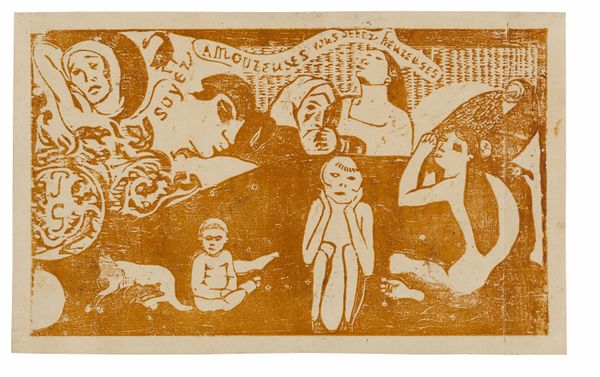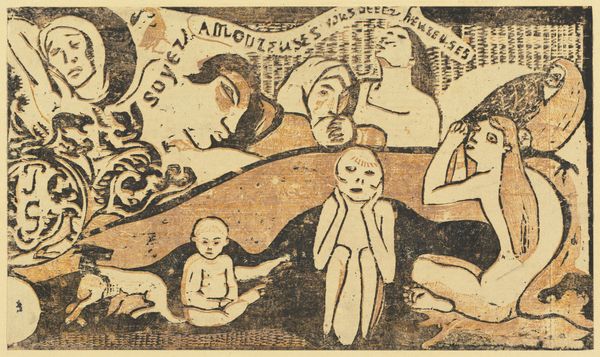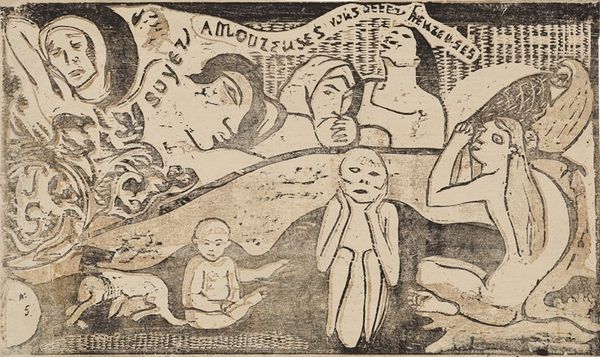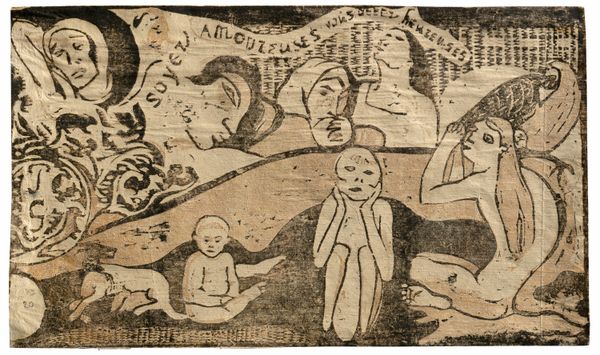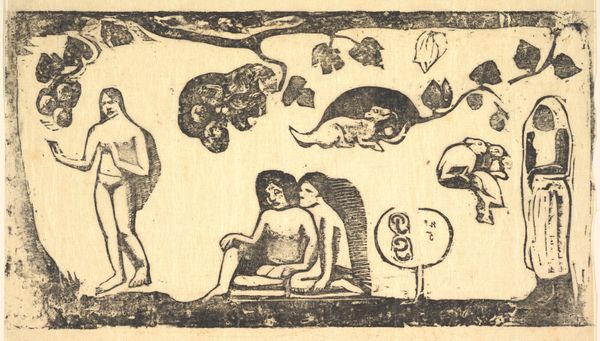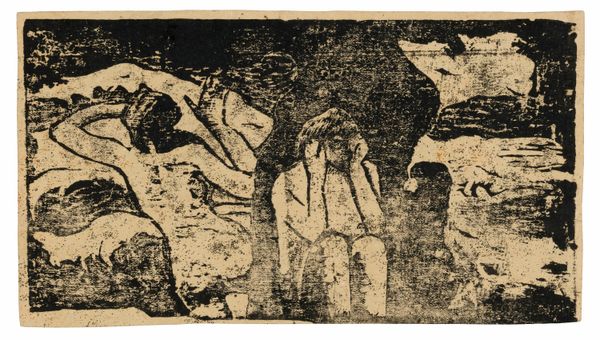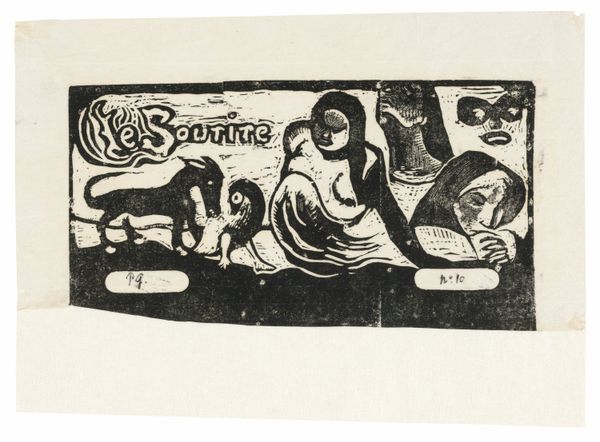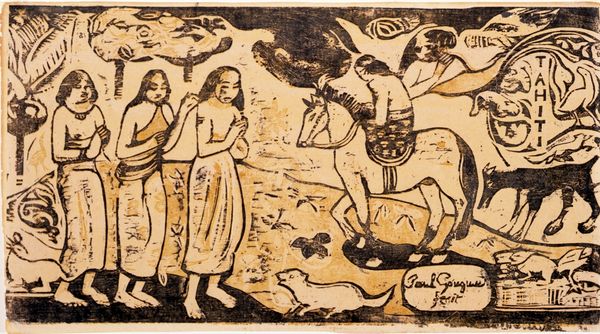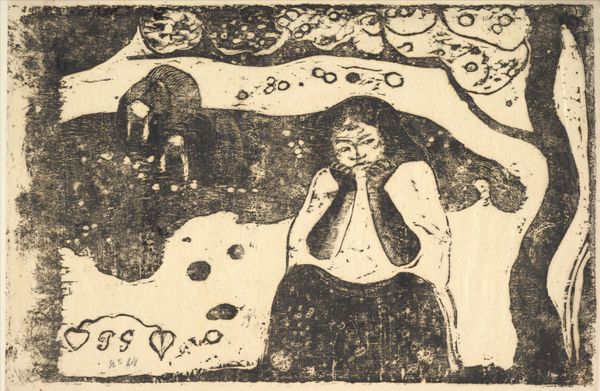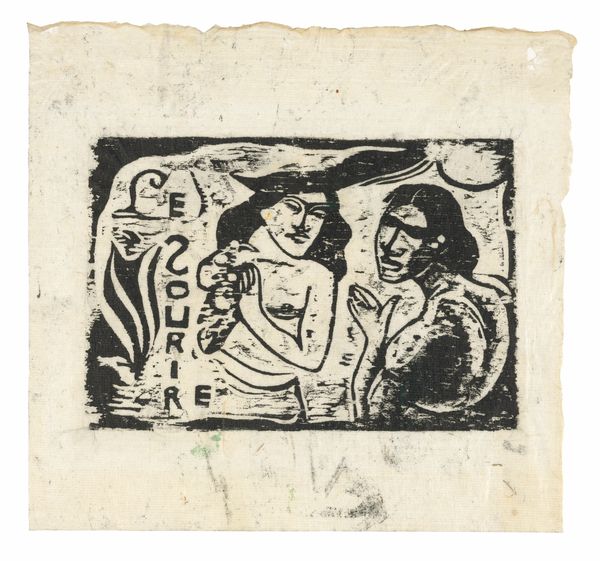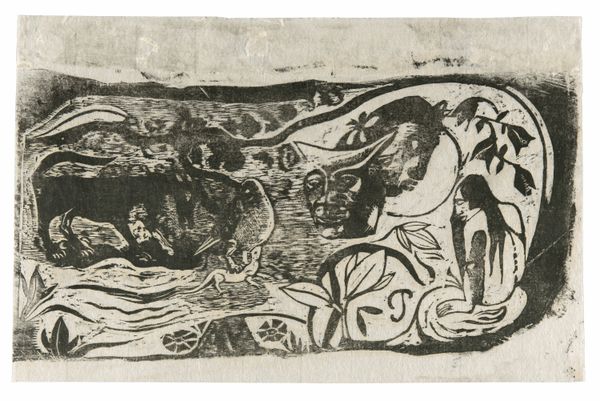
Soyez amoureuses, vous serez heureuses (Love, and You Will Be Happy), from the Suite of Late Wood-Block Prints 1899
0:00
0:00
drawing, print, paper, woodblock-print
#
drawing
#
ink drawing
#
narrative-art
#
ink painting
#
pen drawing
# print
#
figuration
#
paper
#
woodblock-print
#
symbolism
#
post-impressionism
Dimensions: 164 × 276 mm (image), 165 × 276 mm (primary/secondary support)
Copyright: Public Domain
Curator: So, here we have Paul Gauguin's "Soyez amoureuses, vous serez heureuses," or "Love, and You Will Be Happy," a woodblock print from 1899, now residing at the Art Institute of Chicago. Editor: Gosh, it has a dark and moody feel about it, doesn’t it? Figures emerge from the shadows, these pale ghostly forms almost suspended in the inky blackness. I wonder if happy is truly the feeling. Curator: That title, laden with irony! It’s part of a larger suite of late woodblock prints where Gauguin explored themes from his time in Tahiti, often challenging European perspectives on love and happiness. Think about his fascination with the “primitive” as a space for unfiltered emotional experiences, a direct counterpoint to rigid European social mores. Editor: It's intriguing how he uses the woodblock medium to convey those raw emotions. The rough texture, the way the figures are simplified, almost flattened. Look at that central figure, elbows on knees, face cradled in their hands – radiating a sorrow, the opposite of bliss. Does that suggest more the European than the Tahitian experience of relationships perhaps? Curator: Perhaps a disillusionment applicable to both. He's playing with symbolism here, certainly. The figures seem trapped within the frame, their connections tenuous, or even fraught. The title pushes against what we see, suggesting a bitter understanding of love's promise. We see these themes playing out at the close of the nineteenth century with shifting ideas around colonialism. Editor: Exactly! There’s also something almost dreamlike about the composition. The figures overlap, fade in and out of focus, like fragments of a memory. Do you think he’s inviting us to consider our own experiences of love and happiness, or perhaps challenging us to interrogate society's constructs of both? Curator: Absolutely. Gauguin wasn’t interested in simple answers, that's why these prints from his final sojourn in Tahiti hold this uncanny and challenging quality. Editor: It leaves you pondering. So much packed into what, at first glance, appears to be a simple image. "Love, and You Will Be Happy"... a claim that, on deeper inspection, falls to reveal profound ambiguity.
Comments
No comments
Be the first to comment and join the conversation on the ultimate creative platform.
